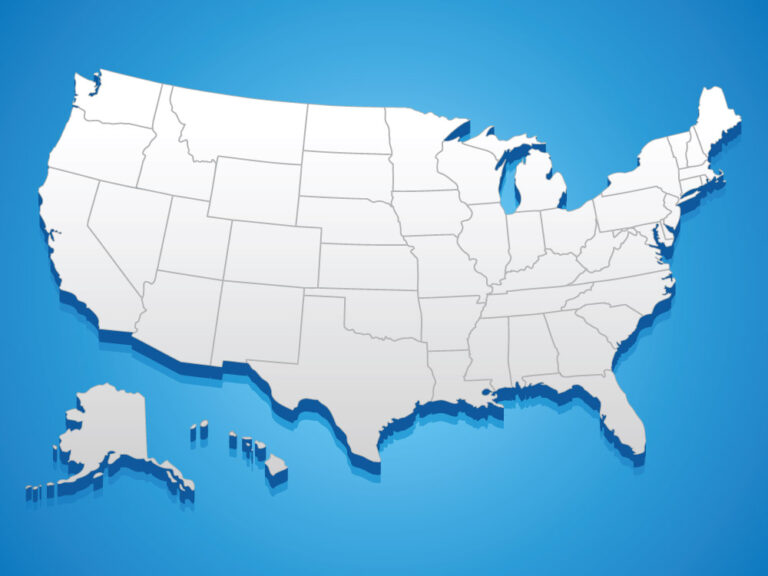In forty-six out of fifty US states, sales tax is charged on the majority of transactions between individuals and businesses. These taxes are used to fund state initiatives, programs, and departments, including schools, public works, and new infrastructure projects. It is an important source of revenue that is built into the budgets of almost every state. In this post you will learn how to calculate sales tax on your purchases.
The sales tax rate is established as a percentage of the sale price of an item or service. So the total sales tax paid by the buyer will depend on how much the item or service purchased costs. A $5 children’s toy in a jurisdiction with a 10% sales tax, for example, would actually cost $5.50. Here’s how these calculations are determined:
How to Calculate Sales Tax to Be Paid
Sales tax is calculated by multiplying the sales tax rate by the cost of the item being purchased and adding it to the total purchase price. Here’s a step by step walkthrough of what this entails:
- Calculate the total cost of your transaction. What are you buying and how much does it cost based on the listed price?
- Calculate the sales tax rate for your transaction. In person, this will be the tax rate for where you currently live. If you are purchasing an item online, it will be the sales tax rate of the final destination address, most likely your home.
- Convert the sales tax rate to a decimal that you can multiply by the purchase price. For example, a 5% sales tax rate would be 0.05.
- Multiple the sales tax rate by the total purchase price of your transaction. This formula is:
Item Price x Sales Tax Rate = Total Sales Tax
Once this has been calculated, add the Total Sales Tax to the Item Price for the final amount paid in the transaction. For example:
Item: New bedsheets
Cost: $50
Tax Rate: 6%
Formula:
Item Price x Sales Tax Rate = Total Sales Tax
$50 x 0.06 = $3
Total Sales Tax + Item Price = Final Amount Paid
$3 + $50 = $53
This formula is automatically applied to almost every purchase made, with some exceptions depending on state and municipality. Let’s take a closer look at these other factors and how to calculate sales tax in ecommerce and other situations.
Factors that Influence Sales Tax Rates
Sales tax rates are impacted by several factors. Consumers rarely need to consider these factors. When purchasing an item, it is the responsibility of the business selling the item to calculate sales tax, collect it, and remit it to the appropriate department of revenue. Here’s what those factors might include:
- Whether an Item is Taxable – Every location has some items that are not taxable. These might include unprepared food at a grocery store (e.g. fruits and vegetables), digital goods in states that do not yet tax them, and certain types of clothing in many states.
- Whether a Service is Taxable – Most services are exempt from sales tax, but there are exceptions including services to property including repairs or improvements, certain business services, and personal care services.
- The Location of the Buyer – Because of the Wayfair Supreme Court decision, sales tax nexus allows municipalities to require companies to collect sales tax for purchases by residents of their states. So if you purchase those bed sheets from an online retailer in a different state, that website will still need to collect sales tax and remit it to your state based on your address.
Businesses are required to calculate and collect sales tax based on these factors, as well as the specific location of an individual. While brick and mortar retailers only need to collect sales tax based on the location of the sale (state and municipal), online retailers need to calculate sales tax rates automatically based on thousands of possible state and municipal sales tax rates.
How to Calculate Sales Tax Rates in eCommerce
Because of the need to determine sales tax rates based on nexus, which has been enacted in all forty-six states the collect sales tax (Oregon, Montana, Delaware, and New Hampshire do not), it’s important to have a system in place that can automatically do so.
While the major ecommerce sites have the technology and resources to build proprietary engines that do all these calculations and can update them as laws and rates change, smaller businesses struggle to keep up. That’s why it’s important to have a technology solution in place that can do the heavy lifting. Automatically calculating the location of both the buyer and seller, total sale amount, which items are subject to sales tax, and which tax rates apply allows merchants to focus on what they do best—promoting their online stores and growing their businesses.
To avoid getting bogged down in sales tax intricacies, it’s important to have a system that will manage these calculations, update automatically when there are state or municipal changes, and track where and when sales tax needs to be remitted. AccurateTax can do this and more for your online business. Learn more about our automatic, accurate ecommerce sales tax calculation software and get a risk free trial here:






